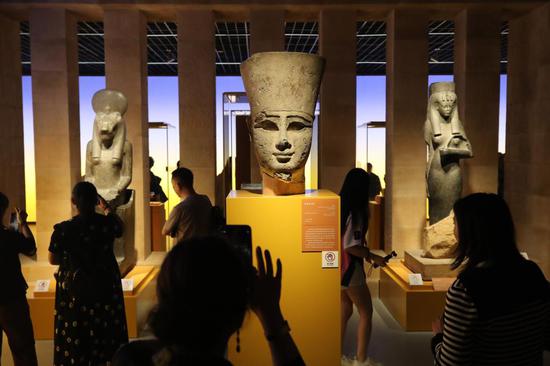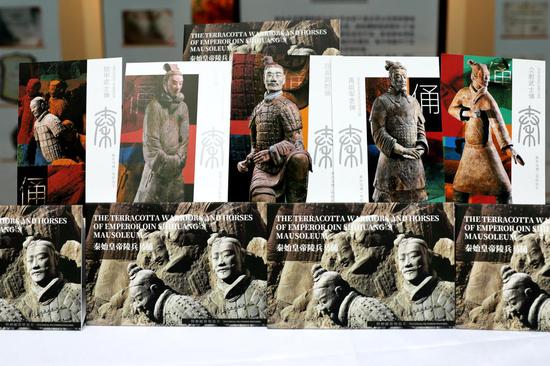Chinese scientists recently found a fossilized skull of a Sumatran rhino, a critically endangered species, in Asia's longest cave in the southwestern province of Guizhou.
The discovery may enrich understanding of the region's ecology in ancient times and provide insights into the animal's extinction in China.
The fossil was unearthed by a team of researchers from the Guizhou Institute of Mountain Resources in an upper passage of the Shuanghe Cave in Zunyi. The entire cave system is more than 409 kilometers long and as deep as 912 meters.
The 60-centimeter-long rhino skull was well-preserved, with two neat rows of teeth clearly visible. The rest of the animal was buried under sediment from a seasonal underground river.
"The skull was lying on one side and appeared to be well preserved, with key parts such as the teeth in undamaged condition," said Wang Deyuan, a researcher at the institute. "Its complete status will help us identify its appearance features and understand ancient populations in the area."
The team has only collected a small piece of bone so far and kept other important parts like the cranium in their original positions, he added.
The Sumatran rhino is the smallest of all living rhinos and the only Asian rhino with two horns. Once roaming across Bhutan, India, Myanmar, Thailand and possibly China and Vietnam, the species now only survives on the Indonesian islands of Sumatra and Borneo, according to the World Wildlife Fund.
The organization classifies the species as critically endangered, with a total population of less than 100.
"The discovery signals that the Shuanghe Cave, and even the entire northern part of Guizhou, was once home to abundant water resources and dense vegetation," Wang said. "It could also shed light on reasons for the rhinos' extinction in China other than human activities, such as the possible role of climate change in their disappearance."
Wang said Chinese and foreign scientists who have teamed up in expeditions at the cave over the past three decades have spotted a large number of mammal fossils such as giant pandas, Asian black bears, mastodons, Chinese rhinos, saigas and civets.
"The region features a karst landscape and has a robust cave system," he said. "Large mammals could stumble and fall in these caves or their bodies might be carried deep into the cave along underground streams.
"Compared to land surfaces, these caves can maintain a relatively stable temperature and humidity, and more importantly, they are free from the impact of human activities. That's why many fossilized remains have been found here."
Researchers plan to further examine the fossilized bones and analyze their DNA to learn more about the evolution of the Sumatran rhino and the region's ancient environment.
"With the development of cave exploration technologies, many deep, untrodden caves are beginning to be researched, leading to the discovery of many new and very precious fossils," Wang said. "It is also important to spread awareness about fossil preservation among cave enthusiasts who might encounter fossils on their own."
Contact the writers at wangxiaoyu@chinadaily.com.cn


















































 京公网安备 11010202009201号
京公网安备 11010202009201号